
The ruins of Linlithgow Palace are located in the town of Linlithgow, West Lothian, Scotland, 15 miles (24 km) west of Edinburgh. The palace was one of the principal residences of the monarchs of Scotland in the 15th and 16th centuries. Although maintained after Scotland's monarchs left for England in 1603, the palace was little used, and was burned out in 1746. It is now a visitor attraction in the care of Historic Environment Scotland.
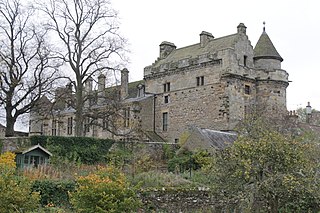
Falkland Palace, in Falkland, Fife, Scotland, is a royal palace of the Scottish Kings. It was one of the favourite places of Mary, Queen of Scots, providing an escape from political and religious turmoil. Today it is under the stewardship of Ninian Stuart, who delegates most of his duties to the National Trust for Scotland. The Chapel Royal in the Palace is dedicated to Thomas the Apostle, and is also open to the public and reserved for Catholic worship.

Dunbar Castle was one of the strongest fortresses in Scotland, situated in a prominent position overlooking the harbour of the town of Dunbar, in East Lothian. Several fortifications were built successively on the site, near the English-Scottish border. The last was slighted in 1567; it is a ruin today.

Sir James Hamilton of Finnart was a Scottish nobleman and architect, the illegitimate son of James Hamilton, 1st Earl of Arran, and Marion Boyd of Bonshaw. Although legitimated in 1512 while still a minor, he continued to be known as the "Bastard of Arran". As a key member of the Hamilton family, and second cousin of James V, King of Scotland, he became a prominent member of Scottish society.
James Murray of Kilbaberton, (d.1634), was a Scottish master wright and architect. He served as the King's Master of Works under James VI, and Charles I. He was one of the first men in Scotland to be called an architect.
William Schaw was Master of Works to James VI of Scotland for building castles and palaces, and is claimed to have been an important figure in the development of Freemasonry in Scotland.
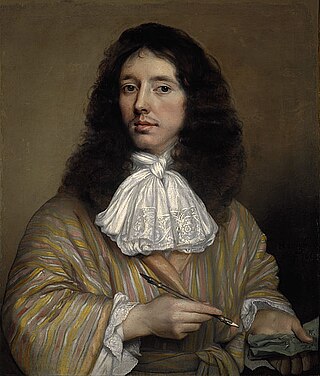
The Master of Works to the Crown of Scotland was responsible for the construction, repair and maintenance of royal palaces, castles and other crown property in Scotland. The main buildings were; Holyroodhouse; Edinburgh Castle; Stirling Castle; Linlithgow Palace; and Falkland Palace. The position was roughly equivalent to that of Surveyor of the King's Works in the English Royal Household. The emergence of the position reflected a shift in responsibility from the masons, or administrators in holy orders, to designers with little hands-on knowledge of stonemasonry. Earlier holders of the office were often courtiers: James Hamilton of Finnart was the king's kinsman; John Scrymgeour was a heraldic expert; while William Schaw, an administrator, was a key figure in the development of Freemasonry, itself a 'craft' having little to do with building. Later holders filled a role similar to that of architects in the modern sense. Some Masters were craftsmen; Robert Robertson, who was master of work at Stirling Castle after the execution of the aristocrat Hamilton of Finnart, was a carpenter. During the reign of James V there was also a Principal Master Wright or carpenter, John Drummond of Milnab, and as well as building works he was concerned with the artillery and its logistics.
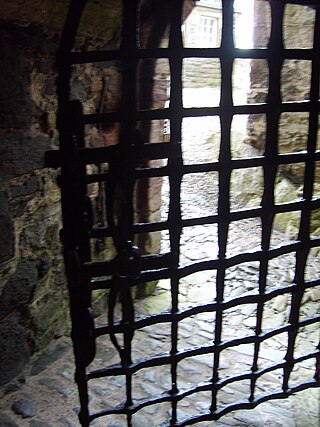
A yett is a gate or grille of latticed wrought iron bars used for defensive purposes in castles and tower houses. Unlike a portcullis, which is raised and lowered vertically using mechanical means, yetts are hinged in the manner of a traditional gate or door, and secured by bolts attached to the yett, or by long bars drawn out from the wall or gateway.
Sir William Stewart of Houston was a Scottish soldier, politician and diplomat.

John Scrimgeour of Myres Castle near Falkland, Fife was Master of Work for royal buildings for James V and Mary, Queen of Scots, and Precentor of the Scottish Chapel Royal.
William MacDowall was a Scottish priest and Master of Works to Mary, Queen of Scots, her mother Mary of Guise, and James VI of Scotland. The title 'sir' was used in Scotland by a priest without a master's degree. The name appears variously as McDowgall, McDougall, McDowall etc., in printed records, he signed accounts MAKDOUELL.

The Scottish royal tapestry collection was a group of tapestry hangings assembled to decorate the palaces of sixteenth-century kings and queens of Scotland. None appear to have survived.

Andrew Mansioun, or Mentioun or Manschone or Manson, was a French artist who worked at the court of James V, King of Scots. He was the master carpenter of the Scottish artillery for Mary, Queen of Scots and James VI of Scotland.

The Entry of James VI into Edinburgh was a ceremony marking the coming of age of James VI of Scotland as an adult ruler on Friday 19 October 1579. The 13-year old king came to Edinburgh to begin his adult rule, having spent his childhood at Stirling Castle.
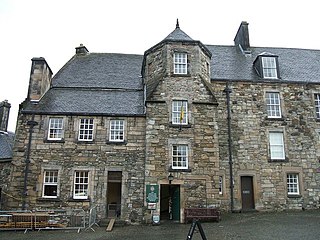
Walter Merlioun, was a Scottish master mason based in Edinburgh.
Henry Wardlaw of Pitreavie (1565–1637) was a Scottish courtier and administrator.

The Raid of Holyrood was an attack on Holyrood Palace, Edinburgh on 27 December 1591 by Francis Stewart, 5th Earl of Bothwell in order to gain the favour of King James VI of Scotland. Bothwell subsequently staged a raid at Falkland Palace, and in July 1593 made another attempt at Holyrood.

Nicolas Roy was a French stone mason who worked in Scotland for James V and his second wife Mary of Guise.
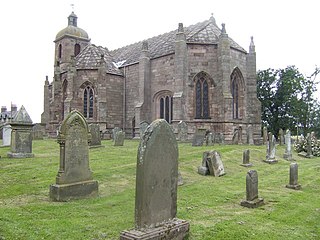
Thomas Peebles or Peblis was a Scottish glazier who worked for James IV, Margaret Tudor, and James V of Scotland.

Records survive of the expenses made to feed the Scottish royal household in the sixteenth century, and the remains of royal kitchens can be seen in the ruins of palaces and castles. Archaeologists can recover evidence of diet from deposits including waste from meals and food preparation.















